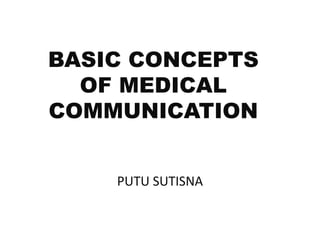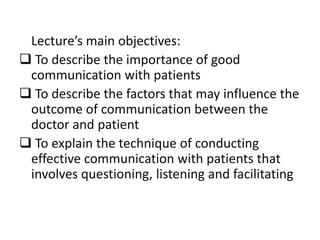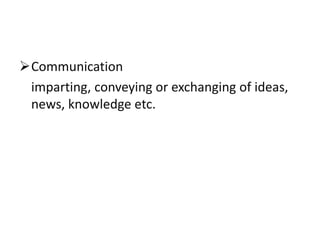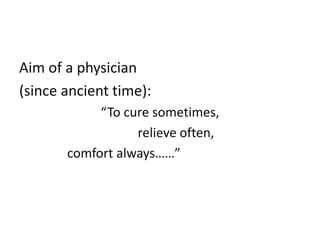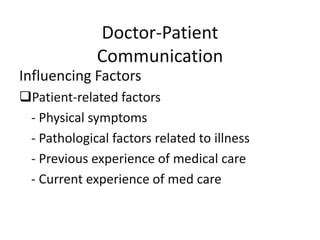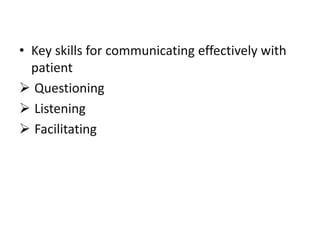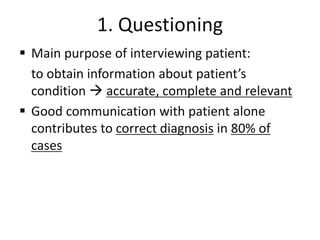This document discusses the importance of effective communication in medicine. It outlines the main objectives as describing the importance of good communication with patients, factors influencing doctor-patient communication, and techniques for conducting effective communication through questioning, listening and facilitating. The key skills of questioning, listening and facilitating are described. Effective communication is essential for accurate history taking, diagnosis, patient compliance and satisfaction. While factors like a patient's symptoms and a doctor's confidence can influence communication, these skills can be learned through practice and feedback.
